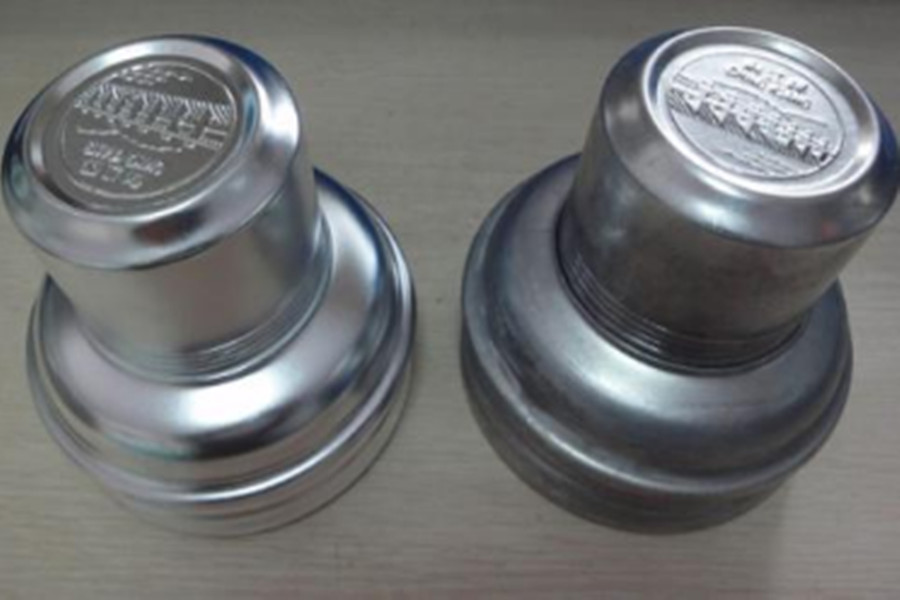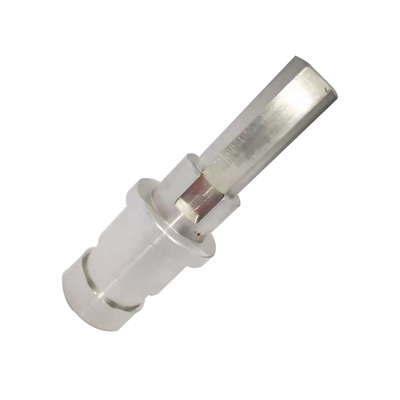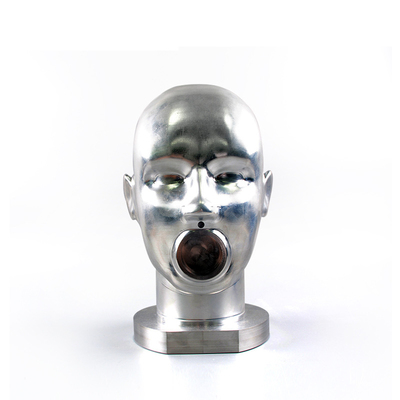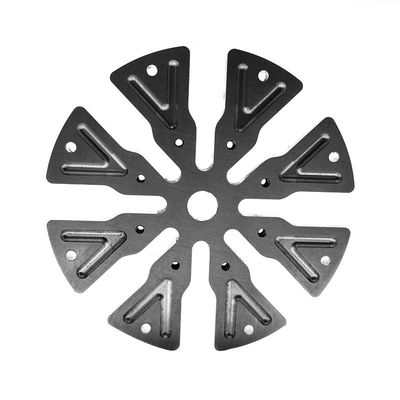Control scheme of flow mark in polishing process
So far, the most widely used system for chemical polishing of aluminum and its alloys is a mixed solution of sulfuric acid-phosphoric acid-nitric acid, copper and additives (hereinafter referred to as the triacid system). This system is widely used in domestic and foreign production lines under different commercial names for its advantages of easy maintenance, wide control range of triacid ratio, polishing temperature, water content, moderate polishing time, and high product measurement.
However, after aluminum and its alloys are polished in the above-mentioned three-acid system, the time taken to transfer from the polishing tank to the washing tank exceeds a certain value, leaving a series of horizontal streaks with alternating light and dark flow marks on the surface of the sample. (Zebra pattern). If the polishing temperature is too high, the flow marks will become mottling with different light and dark, which will seriously affect the appearance quality of the product. At present, there are few reports on the causes and prevention of flow marks at home and abroad. Therefore, the research on the cause and control of flow marks in the chemical polishing of aluminum and its alloys in the three-acid system has certain theoretical value and practical significance.

1. Loading specifications
The loading of aluminum before chemical polishing is in principle the same as the requirements of ordinary anodizing production. The aluminum material should be carefully checked for its purity, chemical composition, appearance quality, etc. before loading. There should be no serious scratches, scratches, corrosion and other defects on the surface of the substrate to ensure that the product obtains a satisfactory brightness. Pay attention to increasing the spacing and inclination of the aluminum material when loading, so that the gas can escape as soon as possible. Due to the high relative density of the chemical polishing solution, the bubbles formed during polishing adhere to the surface of the aluminum material, causing the conductive beam to float up, making the part of the aluminum material that surfaced is not fully chemically polished, and it is easy to cause poor brightness in the same hanging material. Evenly. Therefore, appropriately reduce the load to reduce the accumulation of gas on the surface of the aluminum material. For the decorative surface that requires high brightness, pay attention to the vertical charging outwards to ensure that the gas on the surface escapes as soon as possible. In addition, the loading should be stable and clamps should be used. The clamps should be placed on non-decorative surfaces to avoid leaving traces of the clamps.
2. Chemical cleaning and degreasing
Before aluminum chemical polishing, especially the mechanically polished aluminum surface may contain grease, it is advisable to use high-temperature water or high-temperature steam to clean. However, for lubricating greases containing covalent bonds, the surface of aluminum materials cannot be completely cleaned by hot water. In the past, organic solvents such as trichloroethylene were used for degreasing cleaning. However, they are banned because they contain chlorofluorocarbon organic compounds that destroy the atmospheric ozone layer. Most production lines use super dewaxing water: the aluminum dewaxing agent HT 425, which is highly efficient and environmentally friendly instead of trichloroethylene, can effectively remove grease on the surface of aluminum.
3. Stir
During the chemical polishing process of aluminum, a large amount of gas escapes. If there is no stirring device, it is difficult for the gas to leave the surface of the aluminum quickly, forming a gas accumulation defect. When the gas on the surface of the aluminum material accumulates to a certain amount, the bubbles may escape upward, which may cause streak defects on the surface. Therefore, mechanical or oil-free compressed gas is used to stir the chemical polishing liquid to ensure the uniformity of surface chemical polishing to overcome the above-mentioned defects.
4. Control time
The time required for chemical polishing of aluminum is usually determined by factors such as the aluminum grade and manufacturing process, the surface quality of the semi-finished product, the brightness required for chemical polishing, the amount of dissolved aluminum in the polishing bath, and the bath temperature. The time of chemical polishing is usually 1, 3 minutes.
5. Control temperature
Temperature has an important influence on the efficiency and quality of chemical polishing. The higher the temperature, the higher the polishing efficiency, and at the same time more foam is produced, which is prone to gas defects. The newly prepared chemical polishing bath has strong activity, so the operating temperature should not be too high. When the amount of aluminum dissolved in the bath reaches a certain level, the temperature should be appropriately increased during operation. As the amount of aluminum dissolved in the chemical polishing bath increases, it is necessary to increase the bath temperature to maintain a certain polishing efficiency. If the bath temperature exceeds the upper limit of the set temperature, the satisfactory polishing effect is still not achieved, and it is usually necessary to adjust the bath concentration, or adjust the density directly related to the concentration.
Temperature and time have a great influence on brightness. Especially the influence of temperature is more obvious. As the temperature rises within a certain range, the polishing brightness increases significantly. At low temperatures, as the polishing time increases, the brightness will increase. At high temperatures, the polished brightness is very high, but as the temperature rises and the time is prolonged, the polished parts are prone to over-corrosion, and when the over-corrosion is severe, the polished brightness will not only decrease sharply, but also cause the workpiece to be scrapped, so when the temperature is high At the time, the time must be controlled. Generally speaking, the polishing effect increases with the temperature. When the temperature is low, the polishing time will be prolonged, but the polishing effect will not increase much; the high temperature will shorten the polishing time, and the polishing effect will also be significantly improved.
Link to this article: Control scheme of flow mark in polishing process
Reprint Statement: If there are no special instructions, all articles on this site are original. Please indicate the source for reprinting:https://www.cncmachiningptj.com/,thanks!
 PTJ® provides a full range of Custom Precision cnc machining china services.ISO 9001:2015 &AS-9100 certified. 3, 4 and 5-axis rapid precision CNC machining services including milling, sheet metal to customer specifications,Capable of metal & plastic machined parts with +/-0.005 mm tolerance.Secondary services include CNC and conventional grinding, laser cutting,drilling,die casting,sheet metal and stamping.Providing prototypes, full production runs, technical support and full inspection.Serves the automotive, aerospace, mold&fixture,led lighting,medical,bicycle, and consumer electronics industries. On-time delivery.Tell us a little about your project’s budget and expected delivery time. We will strategize with you to provide the most cost-effective services to help you reach your target,Welcome to Contact us ( [email protected] ) directly for your new project.
PTJ® provides a full range of Custom Precision cnc machining china services.ISO 9001:2015 &AS-9100 certified. 3, 4 and 5-axis rapid precision CNC machining services including milling, sheet metal to customer specifications,Capable of metal & plastic machined parts with +/-0.005 mm tolerance.Secondary services include CNC and conventional grinding, laser cutting,drilling,die casting,sheet metal and stamping.Providing prototypes, full production runs, technical support and full inspection.Serves the automotive, aerospace, mold&fixture,led lighting,medical,bicycle, and consumer electronics industries. On-time delivery.Tell us a little about your project’s budget and expected delivery time. We will strategize with you to provide the most cost-effective services to help you reach your target,Welcome to Contact us ( [email protected] ) directly for your new project.

- 5 Axis Machining
- Cnc Milling
- Cnc Turning
- Machining Industries
- Machining Process
- Surface Treatment
- Metal Machining
- Plastic Machining
- Powder Metallurgy Mold
- Die Casting
- Parts Gallery
- Auto Metal Parts
- Machinery Parts
- LED Heatsink
- Building Parts
- Mobile Parts
- Medical Parts
- Electronic Parts
- Tailored Machining
- Bicycle Parts
- Aluminum Machining
- Titanium Machining
- Stainless Steel Machining
- Copper Machining
- Brass Machining
- Super Alloy Machining
- Peek Machining
- UHMW Machining
- Unilate Machining
- PA6 Machining
- PPS Machining
- Teflon Machining
- Inconel Machining
- Tool Steel Machining
- More Material





